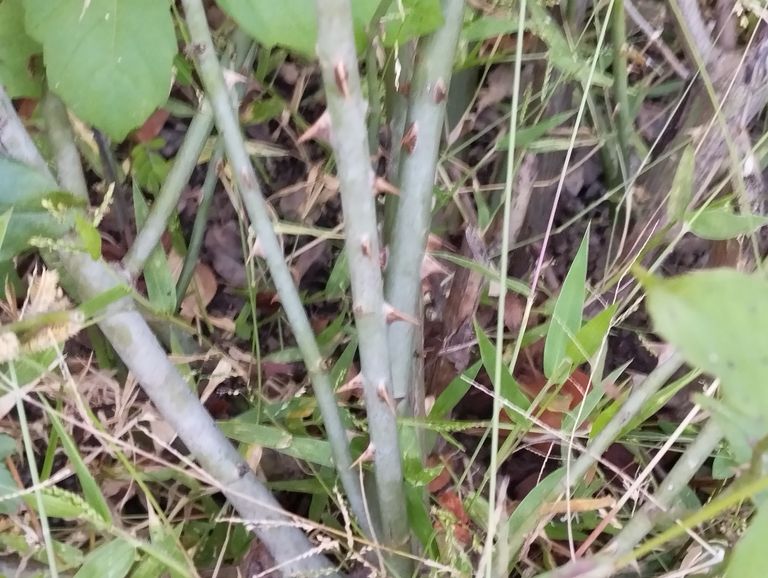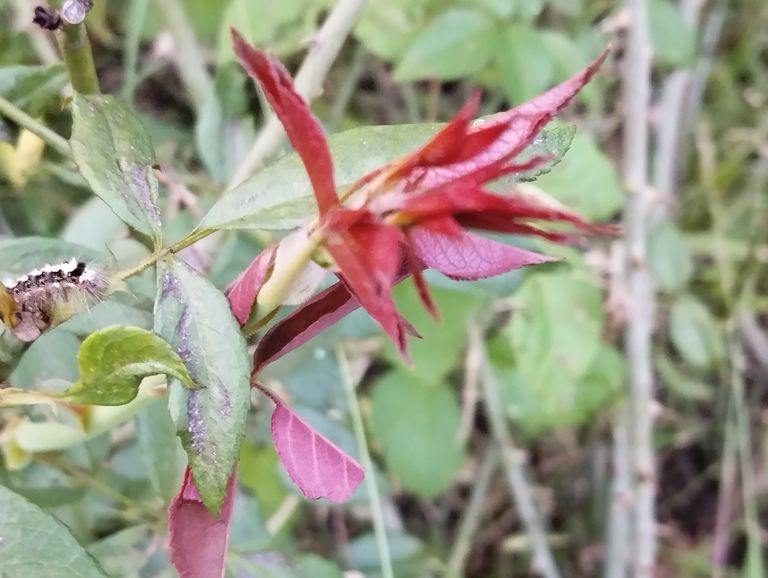
The Complete Guide to Growing Roses Successfully.
Roses are one of the most beloved and beautiful flowers in the world, symbolizing love, passion, and elegance. Growing roses in your garden can be a fulfilling experience, but it requires the right knowledge and care to cultivate healthy and vibrant blooms. In this blog, we will explore the key steps to grow roses successfully, from planting and soil preparation to pruning and pest management.
- Choosing the Right Type of Rose
Before starting your rose garden, it’s essential to choose the right type of rose based on your climate, garden space, and personal preferences. Here are some common types:
Hybrid Tea Roses: Known for their large blooms, these roses are perfect for cutting and displaying indoors.
Floribunda Roses: These roses bloom in clusters, making them ideal for adding vibrant colors to your garden.
Climbing Roses: Ideal for trellises, fences, or walls, these roses grow long canes that can cover large vertical areas.
Miniature Roses: Perfect for containers or small spaces, these roses are compact but bloom profusely.
Once you have chosen your preferred variety, it's time to prepare the planting site.
- Preparing the Soil
Roses thrive in well-draining soil with a pH level between 6.0 and 6.5. Before planting, test the soil to ensure it meets these requirements. Here’s how to prepare your soil for roses:
Improve Drainage: If your soil is heavy clay or overly sandy, amend it by adding organic matter such as compost or well-rotted manure. This will improve drainage and provide necessary nutrients.
Loosen the Soil: Dig a hole about 18 inches wide and 18 inches deep. Loosen the soil at the bottom to encourage the roots to spread.
Add Fertilizer: Incorporate a balanced fertilizer into the soil. Roses are heavy feeders, so they benefit from regular fertilization, especially at the time of planting.
- Planting Roses
Once the soil is ready, it’s time to plant your roses. Follow these steps for successful planting:
Bare-Root Roses: Soak the roots in water for 8-12 hours before planting. This helps rehydrate them after being stored.
Potted Roses: Water the potted rose thoroughly before transplanting to reduce shock.
Planting Depth: Dig a hole large enough to accommodate the roots. For bare-root roses, position the plant so that the bud union (where the canes meet the roots) is just below the soil surface. For potted roses, plant them at the same depth they were in the container.
Watering: After planting, water the roses thoroughly to help settle the soil around the roots.
- Watering and Fertilization
Proper watering and fertilization are critical to the health and growth of roses. Here’s what you need to know:
Watering: Roses need deep watering, especially during dry periods. Water the base of the plant rather than the leaves to prevent fungal diseases. Water early in the morning to allow the foliage to dry during the day.
Fertilization: Use a balanced, slow-release fertilizer every 4-6 weeks during the growing season. You can also supplement with organic options like compost tea or fish emulsion. Avoid over-fertilizing, as this can burn the roots.
- Mulching
Mulching is essential for retaining moisture, regulating soil temperature, and preventing weeds. Apply a 2-3 inch layer of organic mulch, such as shredded bark or straw, around the base of the plant, but avoid piling it against the stems. Mulching also improves soil structure as it breaks down.
- Pruning Roses
Pruning is crucial for maintaining the shape and health of your rose bushes. Regular pruning encourages new growth and more abundant blooms. Here’s how to prune your roses:
When to Prune: Prune roses in early spring when new growth begins to appear. This is the best time to remove dead or damaged wood.
How to Prune: Use sharp pruning shears and cut at a 45-degree angle about 1/4 inch above an outward-facing bud. Remove any dead, weak, or crossing canes to improve air circulation.
Pruning Climbing Roses: For climbing varieties, prune after the first bloom in late spring or early summer. Remove old canes to encourage new ones to grow.
- Dealing with Pests and Diseases
Roses are susceptible to pests and diseases, but with proper care, you can minimize these issues. Here are some common problems and how to address them:
Aphids: These small insects feed on the sap of roses, causing stunted growth. Use insecticidal soap or neem oil to control aphid populations.
Black Spot: This fungal disease causes black spots on leaves and can defoliate your plant. Prevent it by watering at the base of the plant and avoiding wetting the foliage. If the disease appears, remove and destroy affected leaves and apply a fungicide.
Powdery Mildew: This white, powdery fungus thrives in humid conditions. To prevent it, ensure good air circulation around your plants by pruning regularly.
- Winter Care
Roses need extra protection during the winter months, especially in colder climates. Here’s how to prepare your roses for winter:
Mulch: Apply a thick layer of mulch around the base of the plant to insulate the roots from freezing temperatures.
Cover: In areas with severe winters, you can cover the rose bushes with burlap or rose cones to protect them from frost.
Watering: Water your roses deeply before the first frost to ensure the roots have enough moisture to withstand the cold.
- Encouraging Blooms
To get the most out of your roses, deadhead (remove spent blooms) regularly. This encourages the plant to produce more flowers. Additionally, keep the area around your roses clean by removing fallen leaves and petals to prevent the spread of disease.
- Common Mistakes to Avoid
Even experienced gardeners can make mistakes when growing roses. Here are some common pitfalls to avoid:
Overwatering: Too much water can lead to root rot. Ensure your roses are planted in well-drained soil, and water deeply but less frequently.
Neglecting Pruning: Skipping pruning can lead to weak growth and fewer blooms. Make it a habit to prune annually.
Planting Too Close Together: Roses need space for air circulation. Planting them too close can lead to fungal diseases and pest infestations.
Conclusion
Growing roses requires patience, care, and attention to detail, but the reward is well worth the effort. By selecting the right variety, preparing the soil, providing adequate water and nutrients, and protecting your plants from pests and diseases, you can enjoy beautiful roses in your garden year after year. Follow these guidelines, and your roses will thrive, filling your garden with stunning blooms and a delightful fragrance. Happy gardening.


The Health Benefits of Rose Petal Tea
Rose petal tea, made from the delicate petals of the beautiful rose flower, has been cherished for centuries not just for its fragrant aroma but also for its health benefits. This soothing and aromatic tea offers a wide range of advantages, from boosting the immune system to enhancing mood and skin health. In this blog, we will explore the benefits of rose petal tea in detail, how it can positively impact your body and mind, and why you should consider adding it to your daily routine.
- Rich in Antioxidants
Rose petals are packed with antioxidants, which are essential for protecting the body from oxidative stress. Antioxidants help neutralize free radicals that cause cell damage and lead to various health problems, including aging and chronic diseases. Drinking rose petal tea regularly can help reduce the risk of these conditions by promoting overall cellular health. The polyphenols present in rose petals are known to strengthen the immune system, making it easier for your body to fight off infections and inflammation.
- Boosts Immune System
Rose petal tea is an excellent natural remedy for boosting the immune system. It contains high levels of vitamin C, an essential nutrient that plays a key role in enhancing immune function. Vitamin C helps in the production of white blood cells, which are crucial for fighting infections and maintaining a healthy immune response. By drinking rose petal tea, you can strengthen your body's defense mechanisms, especially during cold and flu seasons.
- Improves Digestive Health
One of the lesser-known benefits of rose petal tea is its ability to aid digestion. It has mild laxative properties, which can help alleviate constipation and promote regular bowel movements. Additionally, it can soothe the stomach lining, reducing the risk of indigestion, bloating, and cramps. The tea’s natural anti-inflammatory properties help calm the digestive system, making it beneficial for individuals with conditions like irritable bowel syndrome (IBS).
- Reduces Stress and Anxiety
In today’s fast-paced world, stress and anxiety are common issues that many people struggle with. Rose petal tea has calming effects on the mind and body due to its natural antidepressant properties. The sweet aroma of rose petals stimulates the brain to release endorphins, which promote relaxation and alleviate feelings of anxiety and depression. Drinking a warm cup of rose petal tea can help you unwind after a long day, promoting mental clarity and emotional balance.
- Enhances Skin Health
Rose petals have been widely used in skincare due to their hydrating and anti-inflammatory properties. Drinking rose petal tea can help nourish your skin from within, giving it a radiant and youthful glow. The antioxidants in rose petals help reduce signs of aging, such as fine lines, wrinkles, and blemishes. Additionally, the tea’s detoxifying properties can help flush out toxins from the body, leading to clearer and healthier skin. Regular consumption of rose petal tea can also help treat conditions like acne, eczema, and rosacea.
- Supports Respiratory Health
Rose petal tea has been used in traditional medicine to relieve respiratory issues. Its anti-inflammatory and antibacterial properties can help soothe a sore throat, reduce coughing, and clear nasal congestion. The tea’s mild sedative effect also helps in relieving headaches and respiratory discomfort caused by allergies or colds. Drinking rose petal tea regularly during the colder months can help prevent and alleviate respiratory infections.
- Promotes Weight Loss
For those looking to shed a few pounds, rose petal tea can be a great addition to a weight loss regimen. The tea acts as a natural diuretic, helping to eliminate excess water weight and toxins from the body. Additionally, it can help suppress appetite and reduce cravings for unhealthy snacks, making it easier to maintain a balanced diet. The tea’s digestive properties also promote a healthy metabolism, aiding in the breakdown of fats and carbohydrates.
- Regulates Menstrual Cycle
Rose petal tea has long been used to help women with menstrual issues. Its antispasmodic properties can ease menstrual cramps, reduce bloating, and alleviate mood swings. The tea can also help regulate irregular menstrual cycles by balancing hormones naturally. Women experiencing discomfort or mood fluctuations during their menstrual periods may find rose petal tea a soothing remedy for managing their symptoms.
- Hydrates the Body
Proper hydration is essential for maintaining overall health, and rose petal tea can contribute to your daily fluid intake. While water is the best source of hydration, rose petal tea offers an aromatic and flavorful alternative that still provides hydrating benefits. Its light flavor makes it easy to drink throughout the day, helping you stay hydrated and refreshed without consuming sugary or caffeinated beverages.
- Detoxifies the Body
Rose petal tea acts as a natural detoxifier, helping to flush out harmful toxins from the body. Regular consumption of the tea can support liver function and improve kidney health, enhancing the body’s ability to eliminate waste. Detoxification is important for maintaining a healthy metabolism, reducing fatigue, and promoting overall well-being. Rose petal tea’s diuretic properties help in the detoxification process by increasing urine production, which aids in the removal of toxins.
- Supports Heart Health
The antioxidants present in rose petals, such as flavonoids and polyphenols, can help improve heart health. These compounds are known to reduce inflammation, lower cholesterol levels, and prevent the oxidation of LDL cholesterol, which is a major contributor to heart disease. Drinking rose petal tea regularly can help support cardiovascular health by keeping blood pressure in check and improving circulation. This can reduce the risk of heart attacks, strokes, and other heart-related issues.
- Balances Mood and Hormones
Hormonal imbalances can lead to mood swings, irritability, and other emotional disturbances. Rose petal tea contains natural compounds that help balance hormones, promoting a more stable and positive mood. The tea can also help alleviate symptoms of premenstrual syndrome (PMS), such as anxiety, irritability, and fatigue. By promoting relaxation and reducing stress levels, rose petal tea can be a natural remedy for emotional well-being.
- Aids in Sleep
If you struggle with insomnia or have trouble falling asleep, rose petal tea may offer a natural solution. Its calming properties help relax the mind and body, making it easier to fall asleep. Drinking rose petal tea before bedtime can promote a restful night’s sleep by reducing anxiety and stress. The tea’s gentle sedative effects can improve sleep quality, allowing you to wake up feeling refreshed and rejuvenated.
How to Prepare Rose Petal Tea
Making rose petal tea at home is simple and only requires a few ingredients. Here’s a basic recipe:
Ingredients:
1 cup of fresh or dried rose petals (make sure they are organic and free of pesticides)
2 cups of water
Honey or lemon (optional)
Instructions:
- Rinse the rose petals thoroughly to remove any dirt or impurities.
- Boil 2 cups of water in a pot.
- Add the rose petals to the boiling water and let them simmer for 5–10 minutes.
- Strain the tea into a cup and add honey or lemon for flavor if desired.
- Enjoy your warm and aromatic rose petal tea!
Conclusion
Rose petal tea is a fragrant and beneficial herbal tea that can enhance both your physical and mental well-being. From its antioxidant and immune-boosting properties to its ability to improve skin health, digestion, and mood, this tea offers a wide range of health benefits. Whether you’re looking to detoxify your body, reduce stress, or simply enjoy a delicious and calming beverage, rose petal tea is a wonderful choice. So, why not try incorporating this soothing tea into your daily routine and experience its healing power for yourself?

The Proper Way to Plant Rose Saplings: A Complete Guide
Roses are one of the most beautiful and beloved flowers worldwide. Growing rose plants in your garden can add a touch of elegance and fragrance. However, to ensure that your rose saplings grow healthy and bloom abundantly, it's essential to follow the right planting techniques. In this guide, we'll walk you through the step-by-step process of planting rose saplings, covering everything from selecting the right variety to caring for your plant after planting.
- Selecting the Right Rose Variety
Before planting, you need to choose the right type of rose that will thrive in your climate and soil conditions. Some common types of roses include:
Hybrid Tea Roses: Known for their large, fragrant blooms, these roses are ideal for cutting.
Floribunda Roses: These roses produce clusters of smaller flowers, making them perfect for garden displays.
Climbing Roses: Suitable for vertical spaces, these roses can be trained to grow along fences or walls.
Shrub Roses: Hardy and low-maintenance, shrub roses are great for creating natural hedges.
Do some research on which variety grows best in your local climate, as certain roses prefer cooler weather, while others thrive in warmer regions.
- Choosing the Right Location
Roses need a good amount of sunlight to grow and bloom. Make sure to select a location in your garden that receives at least 6-8 hours of direct sunlight daily. The soil should be well-drained to prevent waterlogging, which can cause root rot. If you're planting near a wall or fence, make sure there's enough air circulation around the plant to prevent fungal infections.
- Preparing the Soil
Soil preparation is a crucial step for healthy rose growth. Roses prefer slightly acidic soil with a pH level of 6.0 to 6.5. Here's how to prepare the soil for planting:
Loosen the Soil: Dig a hole about 18 inches wide and 18 inches deep. Loosening the soil allows the roots to grow freely.
Add Organic Matter: Mix in compost, aged manure, or leaf mold to enrich the soil with nutrients. This also helps in improving soil texture and drainage.
Check for Drainage: If the soil tends to retain water, consider adding sand or gravel to improve drainage. Roses do not like sitting in waterlogged soil, as this can cause fungal diseases.
- Planting the Rose Sapling
Now that the soil is prepared, it's time to plant your rose sapling. Follow these steps carefully:
Dig the Hole: The hole should be large enough to comfortably fit the rose's root ball. For bare-root roses, make sure the hole is deep enough so that the bud union (the swollen part where the rose was grafted onto the rootstock) is at or just below ground level.
Position the Rose: Place the sapling in the hole, spreading the roots out gently. If you're planting a grafted rose, make sure the graft union is about 2 inches below the soil surface in colder climates to protect it from frost. In warmer climates, the union can sit slightly above ground.
Fill the Hole: Fill the hole halfway with the prepared soil and water it thoroughly. This helps settle the soil around the roots. After watering, fill the rest of the hole with soil and pat it down gently to remove air pockets.
Watering: Water the sapling deeply right after planting to ensure the roots are well-hydrated.
- Mulching
Mulching is essential for maintaining soil moisture and preventing weeds from competing with your rose for nutrients. Spread a 2-3 inch layer of organic mulch (such as wood chips, bark, or straw) around the base of the rose plant. Make sure to leave some space around the stem to prevent the mulch from touching the plant directly, as this can encourage fungal growth.
- Watering and Fertilizing
Roses need regular watering, especially during the growing season. However, they do not like to be overwatered. Water your rose saplings deeply 2-3 times a week, depending on the weather and soil type. It's better to water the base of the plant rather than the leaves to prevent fungal diseases like black spot.
Fertilizing: Feed your rose plants with a balanced fertilizer (such as 10-10-10) or a fertilizer specifically designed for roses. Apply fertilizer in the spring when new growth appears, and again after the first bloom cycle to encourage more flowers. Avoid fertilizing too late in the season, as this can promote tender new growth that may be damaged by frost.
- Pruning Your Rose Plant
Pruning is essential for shaping your rose bush and encouraging healthy growth. It also helps remove dead or diseased wood. Here's how to prune roses:
Timing: Prune your roses in early spring, just as new growth begins. Avoid pruning in the fall, as this can stimulate new growth that might not survive winter.
How to Prune: Use clean, sharp pruning shears to make cuts at a 45-degree angle, just above an outward-facing bud. Remove any dead, damaged, or diseased canes first, and then thin out the center of the bush to improve air circulation.
- Pest and Disease Control
Roses are prone to certain pests and diseases, including aphids, spider mites, and fungal infections like powdery mildew. To prevent these issues, follow these guidelines:
Monitor Regularly: Check your roses frequently for signs of pests or disease. Early detection is key to controlling problems before they spread.
Use Natural Remedies: If you spot aphids or other pests, try spraying the plant with a mixture of water and a few drops of dish soap. For fungal issues, use a fungicide or a mixture of baking soda and water.
Encourage Beneficial Insects: Ladybugs, lacewings, and other beneficial insects can help keep pest populations in check.
- Caring for Roses During Different Seasons
Spring: This is the season of new growth, so keep an eye on watering and fertilizing. Prune as necessary and watch for pests.
Summer: Roses will bloom, so deadhead (remove spent flowers) regularly to encourage more blooms. Continue watering and applying mulch to conserve moisture.
Fall: Begin to reduce watering as the weather cools. Stop fertilizing to allow the plant to prepare for dormancy.
Winter: In colder climates, protect your roses by mounding soil or mulch around the base of the plant to insulate it. You can also wrap the plant with burlap if necessary.
- Transplanting Roses
If you need to transplant your rose to a new location, the best time to do this is in early spring or late fall when the plant is dormant. Water the rose thoroughly a day before transplanting to ease the stress on the plant.
- Dig Carefully: Dig around the rose, keeping as much of the root ball intact as possible.
- Replant Quickly: Move the rose to its new location, planting it at the same depth as it was previously. Water it well to help it establish in its new spot.
Final Thoughts
By following these steps, you can successfully plant and grow rose saplings that will produce beautiful blooms year after year. With the right care, your roses will not only enhance your garden's beauty but also bring a sense of accomplishment as you watch them thrive and flourish. Happy gardening.

Congratulations, your post has been upvoted by @dsc-r2cornell, which is the curating account for @R2cornell's Discord Community.
Enhorabuena, su "post" ha sido "up-voted" por @dsc-r2cornell, que es la "cuenta curating" de la Comunidad de la Discordia de @R2cornell.
https://blurtwallet.com/~witnesses?highlight=nabeeel
Vote for me as Witness thanks